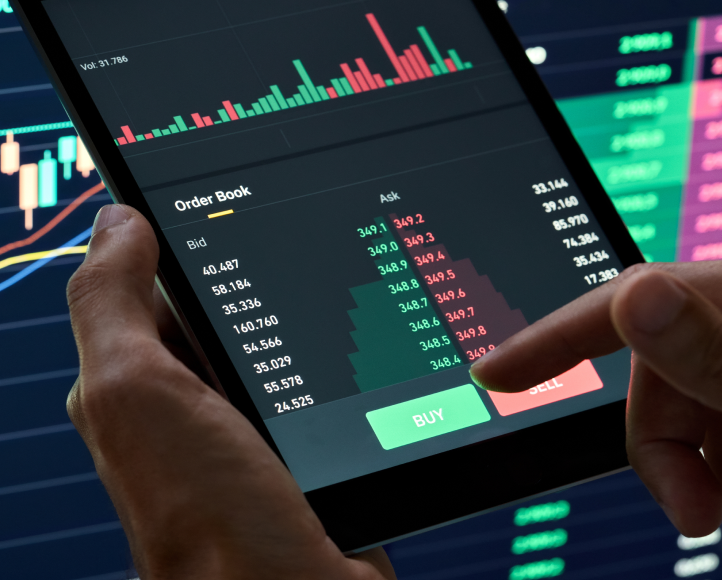Trading Crypto Indicators – A Comprehensive Guide

Understanding Trading Crypto Indicators
In the fast-paced world of cryptocurrency trading, the ability to make informed decisions is crucial. Traders rely on a multitude of tools and strategies, among which indicators play a pivotal role. This guide will delve into various trading crypto indicators, explaining their functions, how to interpret them, and their significance in a trader’s toolkit. For further insights on trading applications, check out this article: Trading Crypto Indicators https://www.studiolinedesign.com/2024/07/06/amateurs-updates-to-the-exness-app-but-overlook-a-few-simple-things/.
The Importance of Indicators in Crypto Trading
Indicators serve as mathematical calculations based on historical price data and trading volume, providing traders with visual cues to assess market conditions. In the volatile realm of cryptocurrencies, these indicators can help traders navigate market fluctuations and make informed choices. They provide critical information about momentum, volatility, trend direction, and market strength.
Types of Crypto Trading Indicators
There are numerous indicators available to traders, each with its unique purpose and functionality. Here are some of the most commonly used trading crypto indicators:
1. Moving Averages
Moving averages smooth out price data to identify trends over a specific period. The two most common types are the Simple Moving Average (SMA) and the Exponential Moving Average (EMA).
- SMA: Calculates the average of a set of prices over a specified number of periods. It’s useful for identifying overall trends in long-term market movements.
- EMA: Gives more weight to recent prices, making it more responsive to new information. This makes it a preferred choice for short-term traders.
2. Relative Strength Index (RSI)
The RSI is a momentum oscillator that measures the speed and change of price movements. It ranges from 0 to 100 and is commonly used to identify overbought or oversold conditions. An RSI above 70 indicates that a cryptocurrency may be overbought, while an RSI below 30 signals oversold conditions.
3. Bollinger Bands

Bollinger Bands consist of a middle band (SMA) and two outer bands that represent standard deviations from the SMA. These bands expand and contract based on market volatility. When the price approaches the upper band, it may indicate an overbought condition, while a price near the lower band may indicate an oversold condition.
4. Moving Average Convergence Divergence (MACD)
The MACD is a trend-following momentum indicator that shows the relationship between two moving averages of a security’s price. It consists of two lines: the MACD line and the signal line. Crossovers between these lines are often used as buy or sell signals.
5. Volume Indicators
Volume indicators, such as the On-Balance Volume (OBV) and Chaikin Money Flow (CMF), help traders gauge the strength behind a price movement. Rising prices accompanied by increasing volume typically indicate a strong trend, while rising prices with declining volume may suggest a potential reversal.
How to Use Crypto Trading Indicators Effectively
While indicators provide valuable insights, they are not foolproof. Here are some tips for utilizing them effectively:
- Combine Indicators: Use multiple indicators together to confirm signals. For instance, pairing RSI with MACD can provide a more comprehensive market analysis.
- Analyze Historical Data: Understanding past performance of indicators in similar market conditions can enhance their predictive power.
- Risk Management: Always implement risk management strategies, such as stop-loss orders, to protect against unforeseen market movements.
- Stay Informed: Keep abreast of market news and events, as external factors can greatly impact indicator readings.
Common Mistakes to Avoid
New traders often fall into certain traps when using indicators:
- Over-reliance on Indicators: Relying solely on indicators without considering market context can be detrimental.
- Neglecting Market Conditions: Indicators may fail during extreme market conditions. Always analyze the broader market context.
- Ignoring Time Frames: Different indicators work best across varying time frames. It’s crucial to find the right time frame for your trading style.
Conclusion
Trading crypto indicators are powerful tools that can significantly improve the trading process when used correctly. Understanding their functionalities, recognizing their limitations, and integrating them with sound trading practices is fundamental to navigating the dynamic cryptocurrency market successfully. As you embark on your trading journey, remember that no indicator is infallible; thus, continuous learning and adaptability are key to long-term success in crypto trading.

Leave a Reply
Want to join the discussion?Feel free to contribute!